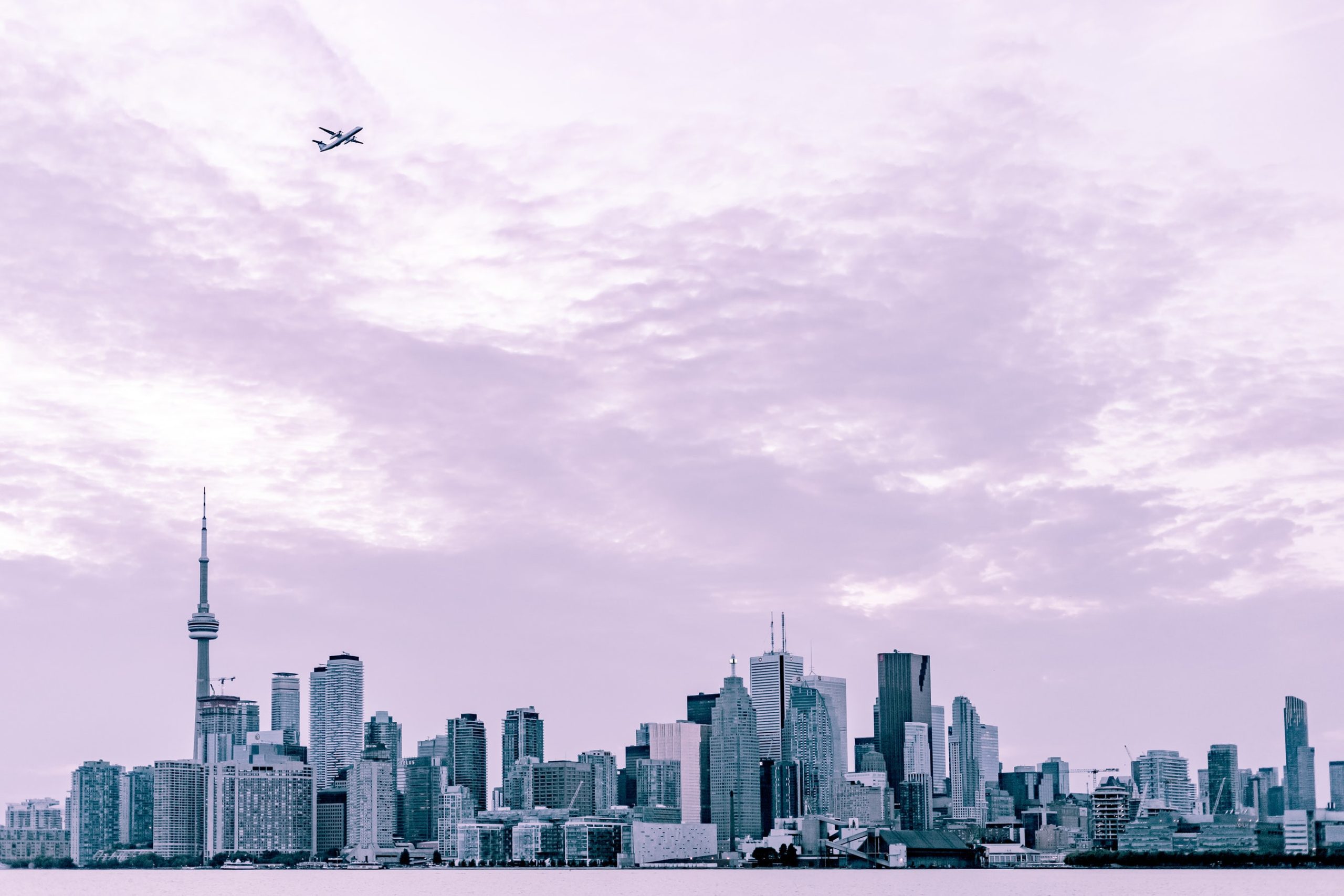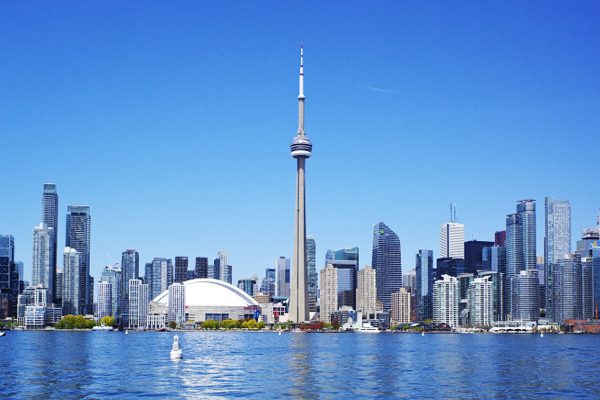As you probably know, there has been a lot of discussion over the Toronto property market. Labelled by media organizations as ‘the next Vancouver’ there’s been a significant increase in housing prices beyond what would be predicted from looking at historical data.
The provincial government eventually acted by passing the Fair Housing Plan in April 2017 – which included additional taxes on foreign buyers (the Non-Resident Speculation Tax, or NRST).
Today, we’re going to look at:
- What caused the prices to increase so dramatically in Toronto
- What the Fair Housing Plan is comprised of
- The effect of the Fair Housing Plan on Toronto
- What the long-term prognosis for property values in Toronto is.
Here we go!
Why did property values in Toronto go crazy in 2016?
Before we get to the Non-Resident Tax and the consequences for Toronto property values, we need to understand the long-term property trends and what happened in 2016.
From looking at TREB data charting MLS average house prices in Toronto, it’s obvious that prices have been increasing steadily since around 2009.
This is pretty consistent with global trends. Urbanization is happening at an unprecedented rate and cities everywhere are getting more competitive as a result. What’s more, fluid global capital looking for a place to call home often looks to real estate. Together, these forces drive up property values in cities.
However, when you look specifically at 2016, you notice a significant increase beyond the norm. So what happened?
To answer that question, we need to go back to Vancouver.
The Vancouver property market
The Vancouver property market is by all accounts a property market that defies market forces and keeps going up. And there are a few reasons for this.
First, the rational economic ones:
- Vancouver is a really nice place to live. Lots of people want to live there and there’s limited supply both in terms of housing and available land (there’s only so much ‘Vancouver’). Therefore, housing is expensive.
- High prices attract real estate investors. People see opportunity and buy a second or third house.
However, there is a series of secondary reasons that have pushed Vancouver into a high-stakes housing bubble. One, but not the only reason is the role of foreign and domestic capital investment in real estate.
Investors, both foreign and domestic, look to Vancouver as a place to invest additional capital. A relaxed regulatory environment, a stable economy, and a solid property market made Vancouver an ideal place to park extra revenue for a healthy return. For example, the percentage of foreign buyers, at its peak, crossed 5 percent, higher even than the 4 percent rate in New York City.
Property costs in Vancouver eventually reached a point that provincial government felt it needed to act.
In August 2016, the provincial government implemented a 15 percent foreign buyers land transfer tax with the objective of cooling the Vancouver property market and bringing affordability back to the city. In short, they wanted to make Vancouver less attractive for global financial markets, reducing demand for investment property and therefore, making the city more affordable.
Which brings us to 2016.
With an additional 15 percent tax on foreign ownership, Vancouver wasn’t as attractive a destination for global capital. Investors started looking for other real estate markets to enter that had many of the same benefits, like a stable economy, and fair regulatory environment. They looked to Toronto.
As more capital flowed into Toronto, houses became more expensive compared to one year earlier. In July 2016, YoY price increase was 16.6 per cent. By November, it was up to 22.7 per cent. Basically, the rate of increasing value was going up as supply failed to keep up with demand.
It’s clear that in August 2016, the Toronto property market started heating up, partly due to the reduced ROI of investing in Vancouver.
But there are other reasons for the accelerating demand. Toronto’s increasing strength as a global city and it’s 100,000 new immigrants annually are driving prices organically, according to Richard Silver of Sotheby’s International Realty Canada. What’s more, the national movement of people further fuels rising prices in 2016:
Business opportunities in both Alberta and Newfoundland that were tied to the oil industry brought people back to the business hub of the country in the GTA.
Combined, these factors caused prices to increase, and the spike drove government action.
How Toronto responded to the 2016 spike
This brings us to the Non-Resident Speculation Tax. Fast forward to April 2017 and we see affordability in Toronto has reached a crisis point:
- Vacancy rates are extremely low, under half of what is considered healthy (source)
- There’s a rent strike happening in Parkdale
- Average cost of a home is at an all-time high
- It’s the least affordable its been over two decades.
Clearly, there is not enough housing supply to go around. The problem reached a tipping point and in April, and just like in Vancouver, the provincial government was forced to act.
On April 20, 2017, they announced the Ontario Fair Housing Plan, a plan to protect renters, increase housing supply, and provide better and more financial and policy regulation around the Toronto housing market.
Included in this plan were provisions like:
- Expanding rent control from building constructed before 1991 to all buildings in Toronto
- Developing under-used government-owned land, like the West Don Lands, with mixed-use affordable and market-rate residential and commercial
- Vacant home taxes to reduce speculation/capital parking
- Increasing property tax (and cracking down on tax evasion) on secondary homes.
And of course, the plan included a 15 per cent Non-Resident Speculation Tax, aimed at reducing the flow of global capital.
So did it work? Did the NRST and the rest of the provisions cool the market?
The Great Cooling
Since April 2017, the market has certainly cooled. According to Richard:
[the market] has definitely slowed, but we as a team are just working harder. It allows us to do our job of negotiating rather than just getting clients to higher numbers as we were forced to do last spring.
You can see this in the data by looking at two main market indicators and comparing them YoY between January and September 2016 to 2017. It gives a sense of where the market was after the Vancouver decision and where the market went after the Toronto decision. We used TREB data to look at total sales and housing price. These indicators build a picture of how hot or not a market is.
As you can see, between January and September, the number of new listings plummeted after the legislation came in as fewer people were selling their homes and fewer people were buying them.
The sale relationship can be seen in price changes between January and September 2016 to 2017:
By September this year, YoY change in property values was essentially flat. Before the legislation, home prices could increase 15-20 percent in a year. By September 2017, that was down to 2-3 percent.
When it comes to foreign buyers, there’s definitely been an impact. However, it’s not because the tax increase makes Toronto property unattractive in terms of returns. Rather, it’s uncertainty about the role of government in the market. That uncertainty is a risk investors are unwilling to take, and they’ve begun to shift their focus elsewhere, especially Montreal.
According to Tracy An:
If [Montreal] had something over $800,000 it would take over two years to be sold… now , it can be sold in two weeks.
As long as there are more attractive markets, global investment will simply move on. It’s what happened in Vancouver and it’s happening in Toronto. And until there’s an incentive to come back (like profitable rental property) or no other, more attractive market to move into, global investment will continue to decline.
These graphs indicate that around the time of the Vancouver decision the Toronto market was booming, and the legislative response has been effective in curbing the market’s growth, if not substantially reducing price and number of listings. Because Toronto’s a growing city with a number of high-paying industries like consulting, AI, tech, medical research, and financial services, there’s only so much cooling that can happen.
In terms of market cooling, keeping market level the same rather than working to reduce prices counts as a win.
Long-term prognosis
There is a flipside to this market cooling.
In Vancouver, the new foreign tax provided some relief from spiralling housing prices. However, it looks like that may have only been temporary. The CBC reported in August 2017, one year on from the tax’s implementation, that:
Analysts say home prices have continued to escalate, sales are on pace with pre-tax expectations and houses are largely still out of reach for most residents.
Essentially, the CBC (and others) found that it was more of a temporary lull rather than a significant cooling effect on the Vancouver property market would be.
The same thing might happen in Toronto. While foreign buyers have been scared off by the government interference in the market, the fact that rental markets can be so profitable (even with rent control) means that investing in Toronto might be too tempting to resist. However, there hasn’t been a significant return yet, particularly when there are other profitable markets that investment can go to. For some buyers, it’s definitely a game of waiting to see what the government does.
And while the Toronto legislation has a much larger scope and thus is likely to have more of an impact, there’s still a chance that the 2018 property market will be right where it was without this regulatory control.
More significantly, the Fair Housing Plan runs a risk of actually reducing affordability. Rent control, for example, is a superb tool to get votes but does little to improve the long-term affordability for the city as it reduces the incentive to build new rental housing. What’s more, while the city is making positive steps by beginning to redevelop areas like the West Don Lands, there’s still a lot of work to do, says Richard:
The land north of the City in the Oak Ridges Moraine must be allowed to be developed. Recently we had a listing of a beautiful house on 91 acres on the escarpment and the property could not be severed under current rules; another 90 homes could be built with beautiful one acre lots, in the meantime, the land just sits there.
Conclusion
Municipal housing markets are entering new and unchartered waters.
Hot markets are common and even a decade on, memories of the 2008 financial crisis and its over-leveraged buyers make housing a global challenge. Additional challenges around global migration patterns, growing income inequality, short-term rentals like Airbnb (and how to regulate them) combine to strain housing stock.
Toronto’s fair housing act combined new regulation, tenant rights, taxes, and municipal development plans to address housing supply. This sort of omnibus approach is going to be how housing challenges are solved given their inherent complexity.
Will it work? It seems to have cooled the market so far but looking at lessons learned in Vancouver in 2016/17 means that this could only be a short-term relief. And with rent control now implemented on such a broad scale, there’s far less incentive to build new rental housing the city desperately needs. However, depending on the level of municipal support for new developments, Toronto might be able to get the supply that it needs to bring the market in line with expectations.
SG00KV












